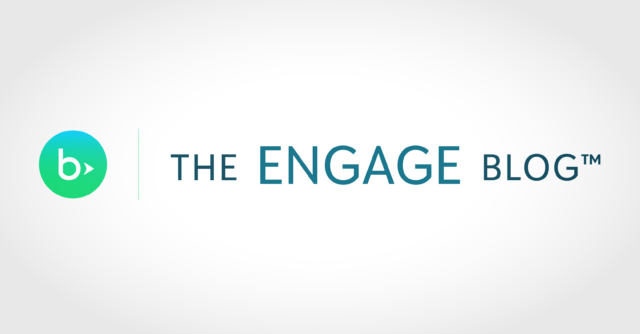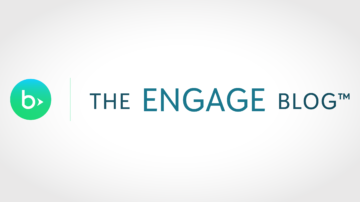What is Planned Giving?

Planned giving, often called” legacy giving,” is the process by which a donor or prospective contributor produces a financial or estate plan to donate something of value to an organization at a later time.
Planned gifts are often donated through a will at an individual’s bequest so that the nonprofit receives the gift upon the donor’s death. A bequest is a planned gift outlined in an estate plan or will, but planned gifts can also come in the form of large donations of money that a nonprofit can choose to invest, from which it will earn income over time.
Typically, planned giving is a legal process coordinated between a lawyer and a nonprofit, as these gifts are taxed differently than a standard donation.
Table of Contents
- Importance of Planned Giving
- Planned Giving Benefits
- What Goes into Successful Planned Giving Programs
- How Donor Management Software Simplifies Planned Giving
- How Blackbaud Can Help
Importance of Planned Giving
Planned giving is important for nonprofit organizations because it gives donors the ability to extend their impact on a cause close to their hearts. While annual giving allows donors to contribute to something important to them in the present, planned gifts in the form of cash, property, or assets like stocks and bonds can influence an organization for years or decades to come.
Research shows that some of an organization’s most devoted donors–those who make recurring donations and consistently contribute for many years—often become planned giving donors. Giving USA found that 78% of an organization’s donors who made a planned gift had a history of making donations within the past 20 years. A philanthropic study found that the average bequest was nearly $78,000. Planned giving bequests account for nearly 10% of charitable giving revenue. With numbers like this, it may benefit every nonprofit organization to develop or build a planned giving program.
Planned Giving Benefits
Planned giving programs provide increased opportunities for existing and potential donors and encourage long-term growth. Here are additional benefits of implementing a planned giving program.
1. Planned Giving Is Accessible to All
Planned giving flips the script on the traditional donation structure because it does not disrupt a supporter’s current cash flow. This can open your program to a larger pool of donor prospects. Freewill’s 2023 Planned Giving Report found that 15% of their users who created estate plans will arrange a planned gift in their will, even if their estate is worth less than $350,000.
2. Offers Sustainable Growth
Future funding is one of the keystones to developing a sustainable donation cycle. According to Blackbaud’s Charitable Giving Report, some organizations receive more than 25% of their annual revenue from planned gifts, with these gifts increasing nearly 5% every year, even during times of widespread financial distress. Nonprofit organizations should be fostering relationships with their planned donors to not only remain in their estate plans but also to identify future fundraising projections. The more planned donors a nonprofit can secure, the more solidified will be their long-term revenue streams.
3. Increases Annual Contributions
Planned giving programs can be organically multiplicative. While an organization benefits from the gift after the supporter’s passing, planning a bequest often inspires invigorated interest in making annual contributions as well. Giving USA found that 7% of planned giving donors said their annual gifts increased after making a planned gift.
What Goes into Successful Planned Giving Programs
While planned giving programs offer a valuable option for every nonprofit organization, they do come with their fair share of administrative and social demands. Here are some key considerations for setting up a successful planned giving program.
Community Support: Begin by pitching the planned giving program to all nonprofit board members and major donors. Building relationships with potential planned donors is an important preliminary step to generate interest. Once there is enough awareness of the program, launch a planned giving committee to review planned giving processes and fundraising policies.
A Planned Giving Committee: Committee members should have a working knowledge of planned giving tax regulations and legal factors to keep the program up to date on all planned giving processes. This committee also can spread the word about the program, plan their own legacy contributions, and help identify new prospects.
Transparent Policies: Nonprofits should always be versed in any relevant fundraising policies. Due to the legal nature of planned gifts, understanding planned giving policies is even more important. A well-developed planned giving program often will utilize a gift acceptance policy (with language for donors to include in their estate planning), donor journeys, communication plans, and an administrative breakdown for bequest processing to help maintain clear policies and streamlined communication between planned donors and the organization.
Realistic Revenue Goals: A well-run planned giving program can facilitate long-term growth. Therefore, it requires a revenue development program with budgetary goals just like a typical fundraising campaign. Create actionable and attainable revenue goals, keeping in mind that a planned giving program is a long-haul investment.
Mission Statement: Similar to other fundraising campaigns, potential planned donors need to see the fruits of their contribution, even if they’re planting a seed to grow later on. Communicate to donors how adding a bequest to their will can lead to a life-altering legacy for the nonprofit. Relate stories of the impact of legacy giving and provide illuminating data on the nonprofit’s mission and importance. Broadcasting the benefits of planned giving and tracking responses offers an effective way to narrow down which prospects are most likely to be appropriate for legacy giving.
Delegate a Planned Giving Officer: Once everything has been set in motion, retain your donors by mindfully managing your planned giving program. Choose who will connect with planned giving donors and who will steward new contributors to your organization’s planned giving program. This person should be fully briefed on planned giving processes and terms to answer any questions donors may have.To make their job easier, Blackbaud’s donor management software optimizes planned giving processes and automates many of the tasks required of your fundraising team.
How Donor Management Software Simplifies Planned Giving
As detailed above, several factors need to be in motion to create a sustainable planned giving network. Donor management software consolidates several time-consuming tasks to simplify the process of managing contributions while also providing access to valuable donor metrics. Some of the benefits of using donor management software for your planned giving program include:
- Record and Track Planned Gifts: Create detailed gift records by vehicle types (such as bequest, annuity, and others), initial and remainder gift value, and gift asset types (such as stock or property). This allows your organization to generate detailed reports of the giving pipeline or track multiple beneficiaries and relationships for a planned gift.
- Data Analysis and Alerts: Donor metrics can provide your team with increased opportunities to identify revenue needs and get a full picture of the donor network. Donor data also makes tracking a planned giving program’s progress much easier, with some software platforms providing updates and alerts to keep the organization informed.
- Find Prospective Planned Givers: With detailed records and an easy way to sort through data using a donor software, you may segment your donors based on age, interest, giving history, and other dimensions to deliver them the appropriate messaging on planned giving.
How Blackbaud Can Help
Blackbaud is one of the most respected software providers for nonprofit organizations, with products designed to streamline the planned giving process for both donors and fundraisers. Build your organization’s platform for planned giving and enhance fundraising effectiveness with Blackbaud’s expert assistance. Request a Blackbaud demo today.
